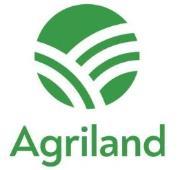Richard Long Farm Update October 2021
The grazing season is all but completed here, with just weanlings and some of the lighter store cattle at grass to finish up the remaining areas of the autumn rotation planner.
The farm here is high and exposed – reaching 1,000ft above sea level – and, on account of this, very low grass growth rates are witnessed over the winter period.
To ensure that I can build grass cover for next spring, I plan on having the entire farm closed by mid-November. This may even be earlier if weather conditions go against us and ground becomes too challenging to graze.
With grass supplies beginning to get tight three weeks ago, I decided to weigh all of the stores still out at grass.
The aim here was to house anything heavy enough to begin feeding to allow the grazing season to be extended for the 2021-born calves and any of the lighter stores. As it stands, 58% of the farm is now closed, with the cattle still at grass to graze the remainder before housing.
From this weighing, 29 heifers – weighing an average of 488kg – and 34 steers, weighing an average of 504kg, were housed and introduced to silage and 4kg/head/day of a high-cereal ration.
The animals have been grouped on the basis of forwardness and I’m hoping to begin drafting some of the more forward type animals shortly before Christmas, with the rest to be moved off farm before calves begin to arrive next spring.
This year’s cattle for finishing indoors are nearly all continental sired – with just a handful of early-maturing animals retained that were not heavy enough to commence feeding at grass to have sold off farm prior to housing.
I am aiming for an average carcass weight target of 306kg for the heifers and 324kg for the steers. For the 15 2020-born animals still at grass, I’m hoping that they’ll gain at least 20kg between the last weighing date and housing to try and minimise the costs of feeding indoors.
Back in July, at the mid-season weighing, I assessed the performance of all of the 2020-born animals on farm.
At this point, it was decided that 27 Angus and Hereford steers and heifers were sufficiently heavy to begin concentrate feeding in August for a period of 60 days prior to slaughter. Of these, just three remain on farm and the plan is to sell these within the next two weeks.
The heifers sold to date generated an average carcass weight of 252kg at O+4- grading, while the steers produced a 307kg carcass at R-3+.
This year’s calves are still receiving 1kg/head/day of concentrate and this will continue until housing, where they will be offered grass silage and concentrates, with the quantity of concentrate depending on silage test results.







